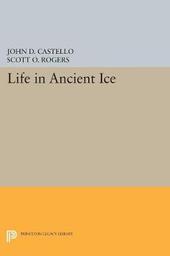
|
Life in Ancient Ice
Paperback / softback
Main Details
| Title |
Life in Ancient Ice
|
| Authors and Contributors |
Edited by John D. Castello
|
|
Edited by Scott O. Rogers
|
| Series | Princeton Legacy Library |
|---|
| Physical Properties |
| Format:Paperback / softback | | Pages:328 | | Dimensions(mm): Height 235,Width 152 |
|
| Category/Genre | Microbiology (non-medical)
Geology and the lithosphere |
|---|
| ISBN/Barcode |
9780691171067
|
| Classifications | Dewey:579.17586 |
|---|
| Audience | | Postgraduate, Research & Scholarly | |
|---|
|
Publishing Details |
| Publisher |
Princeton University Press
|
| Imprint |
Princeton University Press
|
| Publication Date |
21 March 2017 |
| Publication Country |
United States
|
Description
Life in Ancient Ice presents an unparalleled overview of current research into microbial life in ancient glacial ice and permafrost. Particulates of fungi, bacteria, pollen grains, protists, and viruses are carried by wind around the globe. When they fall to Earth in polar regions they may be trapped in ice for hundreds of millennia. Some of the ma
Author Biography
John D. Castello is Professor of Environmental and Forest Biology in the College of Environmental Science and Forestry, State University of New York. Scott O. Rogers is Professor and Chair of Biological Sciences at Bowling Green State University.
Reviews"This book ... reports the unexpected finding that all the ice realms, polar, glacial, and permafrost, are part of the biosphere... As the new field of study of life in extreme conditions continues to expand, this book will be a constant reference. Someday it will be seen to have been seminal."--Jack Harris, Arctic, Antarctic, and Alpine Research "The arrival of this volume is very timely and helpful. It is clear from its materials that Russian scientists have made and are making a significant contribution to life exploration in ancient ice. Until now, their works had seldom appeared in English-language editions. This is one of the reasons why overseas specialists were generally weakly acquainted with the works by our researchers. This gap has now been bridged."--V.A. Melnik, Microbiology
|